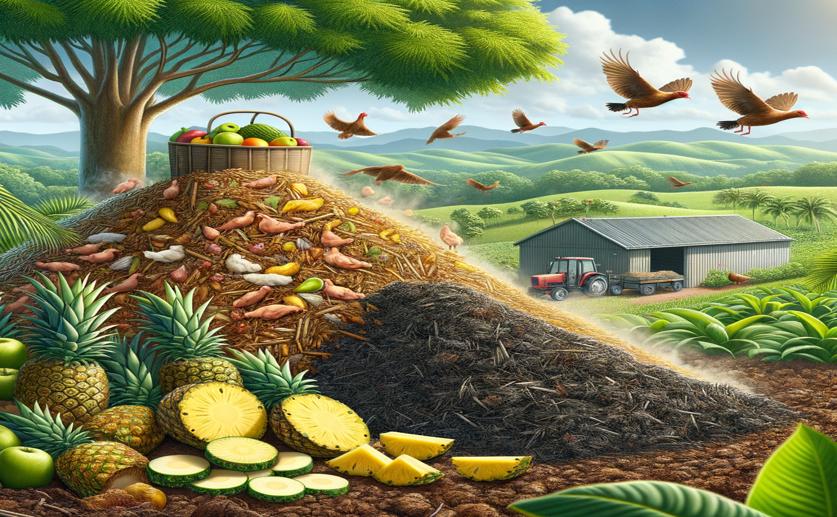
Improving Compost Quality by Combining Pineapple Waste and Poultry Litter
Jenn Hoskins
27th July, 2024

Image Source: Natural Science News, 2024
Key Findings
- The study by the University of Abomey-Calavi evaluated compost quality from pineapple residues mixed with poultry litter
- The composting process increased temperature, pH, CO2 release, and nitrogen content, while reducing electrical conductivity and organic carbon
- The C4 compost (75% pineapple harvest residue + 25% poultry litter) had the best chemical properties for crop fertilization
AgricultureEnvironmentSustainability
References
Main Study
1) Dynamics of co-composting of pineapple harvest and processing residues with poultry litter and compost quality.
Published 26th July, 2024
https://doi.org/10.1038/s41598-024-66335-z
Related Studies
2) Agricultural waste recycling in horticultural intensive farming systems by on-farm composting and compost-based tea application improves soil quality and plant health: A review under the perspective of a circular economy.
3) Evaluation of cornstalk as bulking agent on greenhouse gases emission and bacterial community during further composting.
4) Sustainable utilization of biowaste compost for renewable energy and soil amendments.



 16th July, 2024 | Jenn Hoskins
16th July, 2024 | Jenn Hoskins